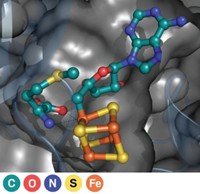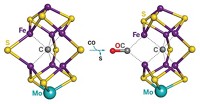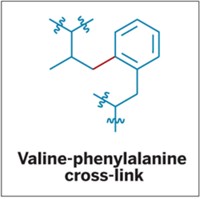Advertisement
Grab your lab coat. Let's get started
Welcome!
Welcome!
Create an account below to get 6 C&EN articles per month, receive newsletters and more - all free.
It seems this is your first time logging in online. Please enter the following information to continue.
As an ACS member you automatically get access to this site. All we need is few more details to create your reading experience.
Not you? Sign in with a different account.
Not you? Sign in with a different account.
ERROR 1
ERROR 1
ERROR 2
ERROR 2
ERROR 2
ERROR 2
ERROR 2
Password and Confirm password must match.
If you have an ACS member number, please enter it here so we can link this account to your membership. (optional)
ERROR 2
ACS values your privacy. By submitting your information, you are gaining access to C&EN and subscribing to our weekly newsletter. We use the information you provide to make your reading experience better, and we will never sell your data to third party members.
Synthesis
Better Model Of Methanol Enzyme
December 24, 2007
| A version of this story appeared in
Volume 85, Issue 52
Some bacteria rely on the enzyme methane monooxygenase (MMO) to convert methane into methanol. Now, a research team led by Lawrence Que Jr. of the University of Minnesota, Minneapolis, and Eckard Münck of Carnegie Mellon University has synthesized a new diiron complex that provides a better model for studying MMO's mechanism of action (Proc. Natl. Acad. Sci. USA, DOI: 10.1073/pnas.0708516105). MMO's soluble version reacts with O2 to yield a diiron(IV) intermediate, simply called Q, which is the species known to oxidize CH4. Que and coworkers previously proposed that Q has a diamond-shaped FeIV2O2 core, and they synthesized an FeIIIFeIVO2 complex as a model. In the new work, the researchers were able to oxidize this complex to FeIV2O2 (shown) by electrolysis. Reactivity differences between the diiron model and an iron complex with an FeIV=O center provide clues to understanding MMO activity, the scientists say, in particular pointing to a mechanism in which the FeIV2O2 ring opens to form a terminal FeV=O unit that reacts with CH4.






Join the conversation
Contact the reporter
Submit a Letter to the Editor for publication
Engage with us on Twitter